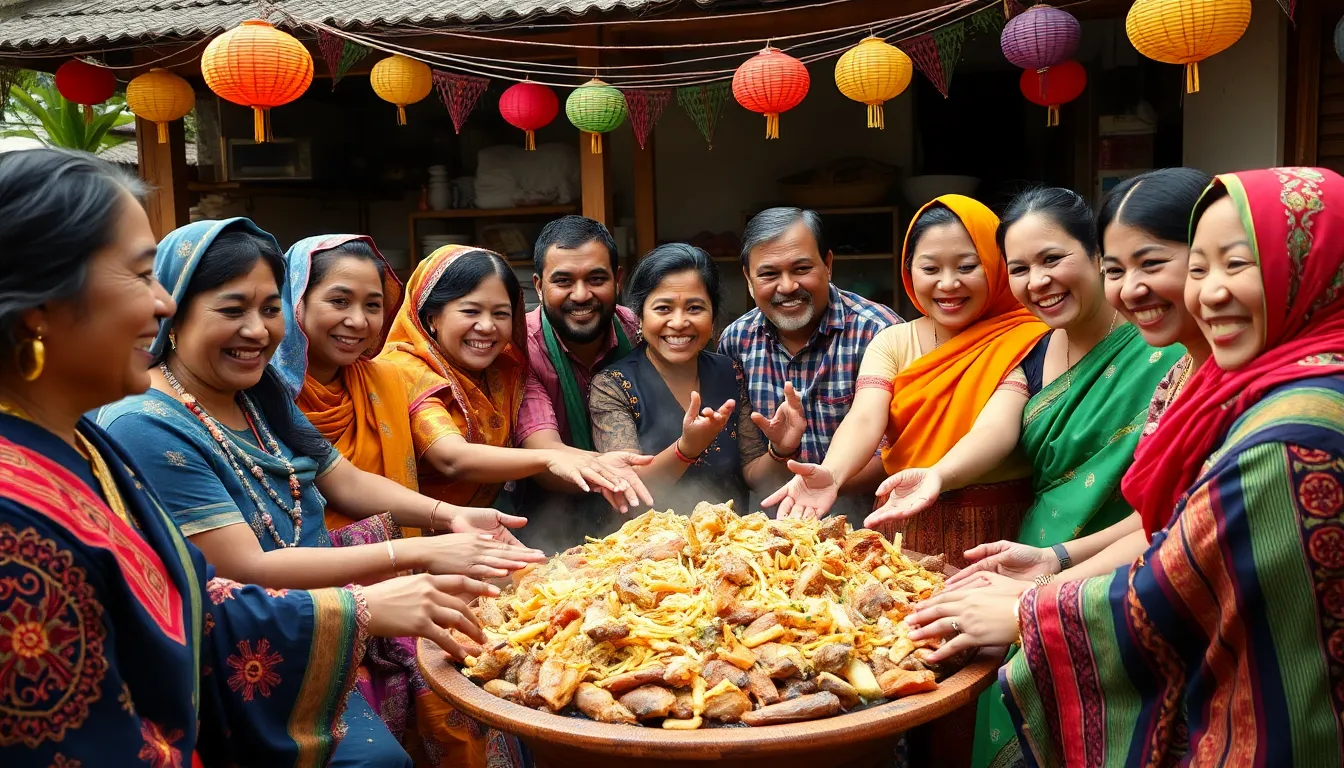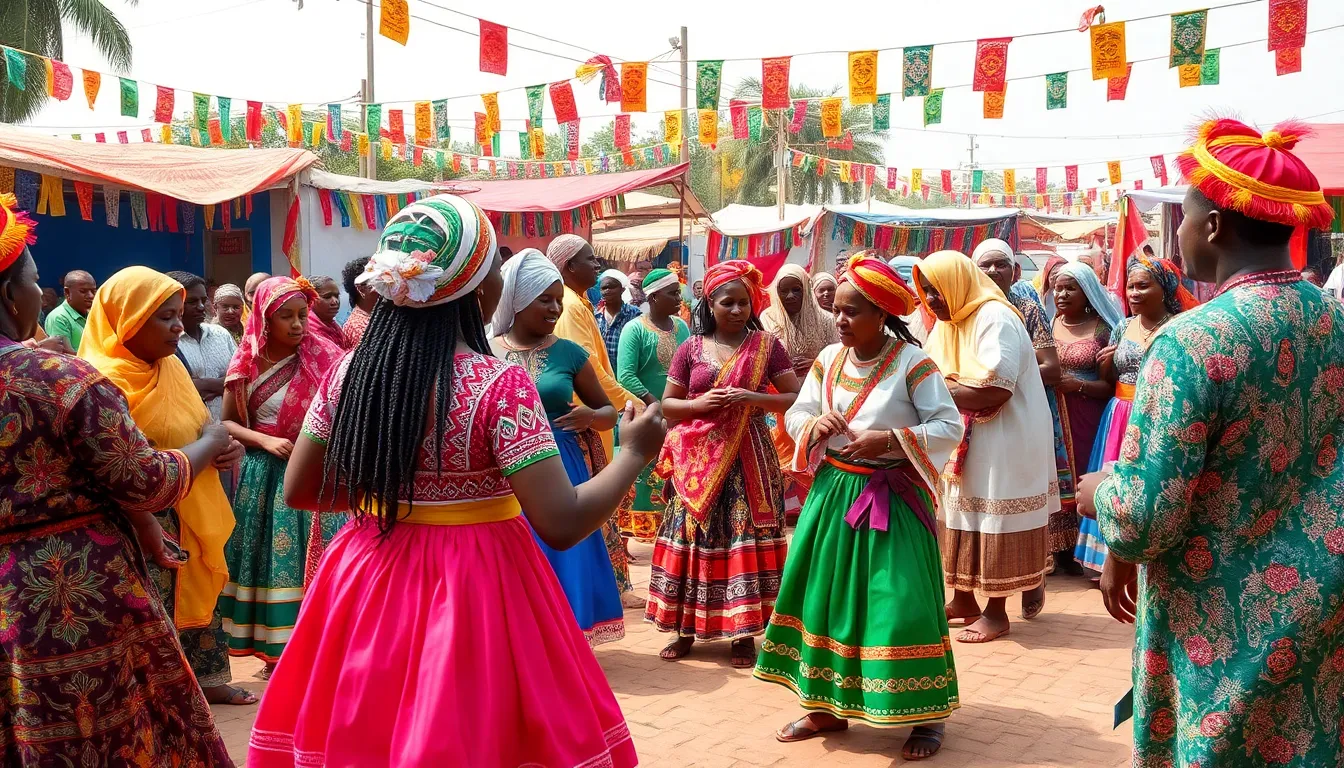Babaijabeu, a fascinating cultural phenomenon, captivates those who delve into its rich traditions and vibrant expressions. Originating from the heart of a unique community, it embodies a blend of history, art, and social interaction that continues to thrive today.
As people seek deeper connections to their roots, babaijabeu offers a window into the past while embracing modern influences. This dynamic cultural practice not only entertains but also fosters a sense of belonging and identity among its participants. Exploring babaijabeu reveals the intricate tapestry of its significance, inviting both curiosity and appreciation from a global audience.
Table of Contents
ToggleOverview of Babaijabeu
Babaijabeu represents a significant cultural expression, deeply embedded in its community’s history and traditions. This unique practice showcases a variety of artistic elements, such as music, dance, and storytelling, which collectively illustrate the community’s rich heritage. Participants engage actively in babaijabeu, performing in vibrant gatherings that serve as both social interaction and cultural preservation.
Through its performances, babaijabeu fosters a sense of belonging among individuals, creating bonds that link past and present. The tradition adapts, integrating modern influences that resonate with younger generations while maintaining its fundamental essence. This dynamic quality attracts global interest, encouraging cultural exchange and appreciation.
The ongoing relevance of babaijabeu highlights its dual role: as a source of entertainment and a vital means of identity formation. Its evolution reflects broader societal changes, revealing insights into how communities navigate the interplay between heritage and contemporary life.
Cultural Significance of Babaijabeu
Babaijabeu holds deep cultural significance, embodying the spirit and traditions of its community. This vibrant practice serves as a testament to the community’s heritage, blending history and contemporary life.
Historical Background
Babaijabeu traces its roots to ancient traditions, where communal gatherings celebrated significant events and shared stories passed down through generations. Historical records indicate that these gatherings date back several centuries, evolving alongside societal changes. Key influences include migration patterns, trade routes, and cultural interactions with neighboring communities. The preservation of babaijabeu reflects the community’s commitment to maintaining its identity and traditions amid globalization.
Regional Variations
Babaijabeu varies significantly across different regions, each manifestation containing unique elements that reflect local customs and practices.
- Cultural Differences: Regions may emphasize different art forms, such as specific dance styles or music genres, showcasing local talent.
- Community Engagement: Local gatherings often feature distinct rituals or symbols meaningful to that community, enhancing participation.
- Modern Adaptations: In urban areas, babaijabeu incorporates contemporary themes, attracting younger audiences while retaining traditional roots.
These regional variations encapsulate the richness of babaijabeu, contributing to its global appeal and fostering cultural exchange among diverse populations.
Characteristics of Babaijabeu
Babaijabeu features distinctive elements that highlight its cultural richness and community engagement. Key characteristics include the ingredients used and the preparation methods that define this unique tradition.
Ingredients Used
Babaijabeu incorporates a variety of ingredients essential to its authenticity and flavor. Common ingredients include:
- Grains: Typically, rice or corn is the base, providing a staple component.
- Vegetables: Various seasonal vegetables enhance the dish’s freshness and nutritional value.
- Meats: Regional meats, such as chicken or fish, contribute rich flavors and cultural relevance.
- Spices and Herbs: Unique spices and herbs add depth and aroma, reflecting local culinary traditions.
- Fermented Ingredients: Sometimes, fermented elements are included, offering a distinct taste that connects with historical practices.
These ingredients collectively create a dish that not only satisfies hunger but also connects participants to their cultural roots.
Preparation Methods
The preparation of babaijabeu involves traditional techniques that ensure its authenticity. These methods typically include:
- Soaking: Grains are soaked to enhance texture and digestibility.
- Steaming: Steaming often retains the vibrant flavors of the ingredients while preserving their nutritional content.
- Mixing: Ingredients are meticulously mixed, allowing flavors to meld before cooking.
- Cooking Over Open Flame: This method, common in traditional settings, imparts a smoky flavor unique to babaijabeu.
- Community Involvement: Often, preparation is a communal activity, fostering social bonds among participants.
These preparation methods not only contribute to the dish’s flavor profile but also emphasize the importance of community in the tradition of babaijabeu.
Taste and Texture Profile
Babaijabeu features a complex taste and texture profile that reflects its rich cultural heritage. The primary ingredients, such as rice or corn, provide a hearty base, offering a slightly chewy texture that complements various toppings. Seasonal vegetables add a fresh crunch, balancing the dish’s overall consistency.
Unique spices and herbs infuse babaijabeu with deep flavors, ranging from earthy to aromatic notes. Common spices include cumin and coriander, which enhance the dish’s flavor depth. Occasionally, participants incorporate fermented elements, contributing tanginess that elevates overall taste.
Preparation methods contribute significantly to its texture. Soaking grains allows for proper hydration before cooking, resulting in a fluffy consistency. Steaming ensures even cooking, while the final step of cooking over an open flame imparts a subtle smokiness, which enriches the flavor profile.
Regional variations further diversify babaijabeu’s taste and texture. Some areas highlight different meats, while others focus on specific vegetables or spices, resulting in distinct flavor experiences. These localized adaptations create unique interpretations, allowing at each gathering to reflect individual community traditions while maintaining the dish’s fundamental qualities.
The harmonious blend of textures and flavors makes babaijabeu a unique culinary experience, reinforcing its role as a social and cultural connection among participants.
Conclusion
Babaijabeu stands as a vibrant testament to cultural heritage and community connection. Its unique blend of history art and social interaction fosters a sense of belonging among participants while appealing to a global audience. As it adapts to modern influences the tradition remains rooted in its rich past offering a dynamic experience that captivates both young and old.
The distinct flavors and preparation methods not only enhance its culinary appeal but also reinforce social bonds within the community. Babaijabeu’s evolution reflects a commitment to preserving identity amid change making it a significant cultural expression worth celebrating. This captivating phenomenon continues to inspire curiosity and appreciation inviting everyone to explore its depth and significance.




